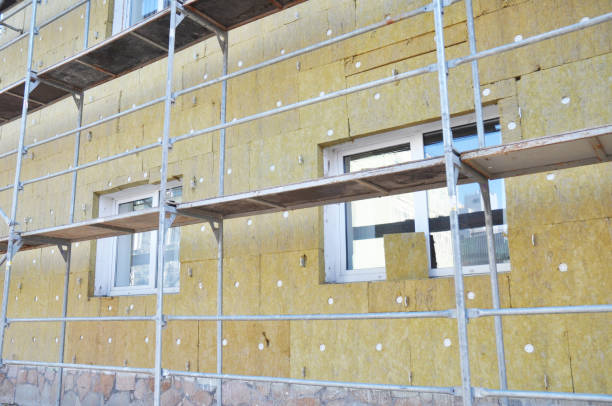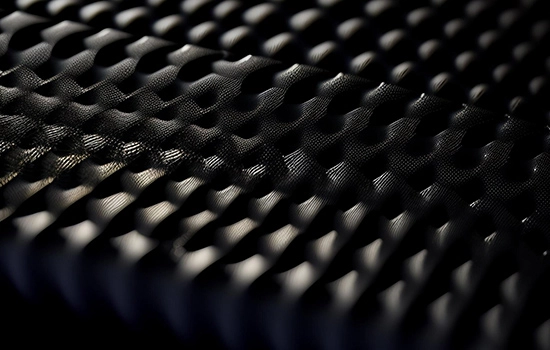How to Insulate New Construction: A Comprehensive Guide
Discover effective strategies for insulating new construction with our comprehensive guide by FUNAS. Learn key techniques and materials to enhance energy efficiency, reduce costs, and ensure comfort in your new building. Dive into expert insights on how to insulate new construction and make informed decisions that promote sustainability and durability. Elevate your construction projects with FUNAS.
Preface
Why Insulate New Construction?

Types of Insulation Materials
| Type of Insulation | Best Use Cases | Advantages | Disadvantages | R-Value per Inch | Average Cost (per sq. ft.) |
| Fiberglass | Walls, attics, floors | Affordable, easy to install, non-flammable | Can irritate skin and lungs during installation | 2.9–3.8 | 0.50–0.50–1.50 |
| Spray Foam | Hard-to-reach areas, crawl spaces, walls | Superior air sealing, high R-value, moisture-resistant | Expensive, requires professional installation | 6.0–7.0 (closed-cell) | 1.50–1.50–3.50 |
| Cellulose | Walls, attics, retrofitting | Eco-friendly, excellent soundproofing, good for irregular spaces | Can settle over time, less effective in damp areas | 3.6–3.8 | 1.00–1.00–2.00 |
| Rigid Foam Board | Foundations, exterior walls, roofs | High R-value with minimal thickness, moisture-resistant | More expensive, requires precise cutting and fitting | 4.0–6.5 | 1.00–1.00–2.50 |
| Mineral Wool (Rock Wool) | Walls, attics, soundproofing | Fire-resistant, excellent soundproofing, easy to install | Heavier and more expensive than fiberglass | 3.0–3.3 | 1.50–1.50–3.00 |
| Cotton (Denim) | Walls, attics | Eco-friendly, non-toxic, easy to handle | Less common, higher cost | 3.0–3.7 | 2.00–2.00–4.00 |
Step-by-Step Guide to Insulating New Construction

Conclusion
FAQs About Insulating New Construction

Best Car Sound Insulation Material Suppliers List

10 Best Industrial Rubber Sheet Manufacturers

How to Insulate Pipes in Attic: Easy Steps for Energy Efficiency

2025 Tips: What is the Best Insulation for Pex Pipe

How to Insulate Pipes: Effective Solutions for Long-Term Protection
service
How does your technical support work?
Our technical support team is available to guide you through every stage of your project—from product selection and design to installation. We provide expert consultation to ensure that you get the best insulation solution for your needs and can assist with troubleshooting if needed.
Are your rubber foam products environmentally friendly?
Yes, our insulation products are designed with sustainability in mind. They help reduce energy consumption by minimizing heat loss and gain, and they are made from durable materials that have a long life cycle, reducing the need for frequent replacement.
FAQ
What types of rubber foam insulation do you offer?
We offer a wide range of rubber foam insulation with different thicknesses and specifications. Thermal insulation material manufacturer FUNAS sleeves and sheets are suitable for different application scenarios.
How to start a consultation?
You can contact us through our website, phone, or email. We will arrange a professional staff to discuss your needs about best thermal insulator and how we can help you.
What is the typical delivery time for custom orders?
Our daily production capacity is 800 cubic meters. Delivery time varies depending on the complexity of the insulation material wholesale order, but we can deliver large quantities of customized products within 4-6 weeks after the approval date, and small quantities can be delivered within 15 days.
You might also like


This product has passed the national GB33372-2020 standard and GB18583-2008 standard. This product is a yellow liquid.
Anggu spray glue is a product with high cost performance and a wide application range. It is mainly used for home construction, engineering construction, and various construction defect repair places. This product is low odor, no formaldehyde, spray-convenient glue, table drying speed, long bonding time, no chalking.

This product has passed the EU REACH non-toxic standard and ROHS non-toxic standard. (This product is a yellow liquid).
Anggu 138°high temperature universal glue is a high-end product, with high viscosity, slow drying, curing of the adhesive layer, and a maximum resistance to continuous temperature of 138℃.

This product has passed the EU REACH non-toxic standard and ROHS non-toxic standard. (This product is a yellow liquid).
Anggu insulation nail special adhesive is a adhesive with high viscosity, slow drying, aging resistance, high strength, and excellent brushing performance; The special adhesive for insulation nails has a slow drying speed and strong adhesion to the iron sheet. It can be flexibly moved during construction, and has a strong bonding force after curing, low odor.and is non-toxic.
Leave a message
Have any questions or concerns about our products? Please leave us a message here and our team will get back to you promptly.
Your queries, ideas, and collaboration opportunities are just a click away. Let’s start a conversation.

